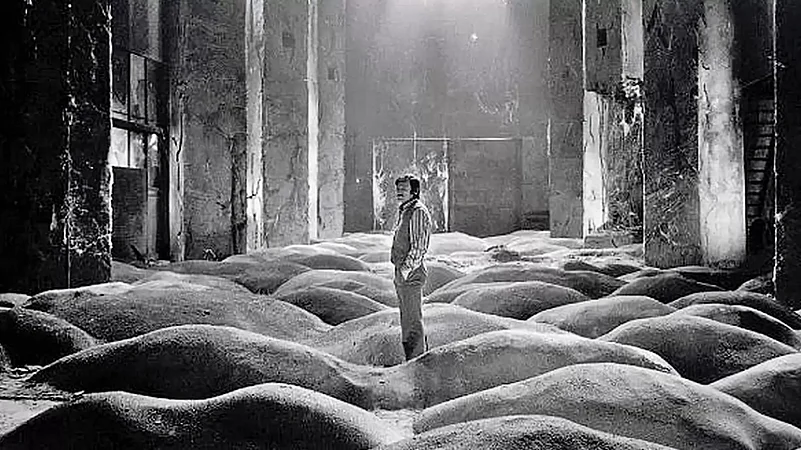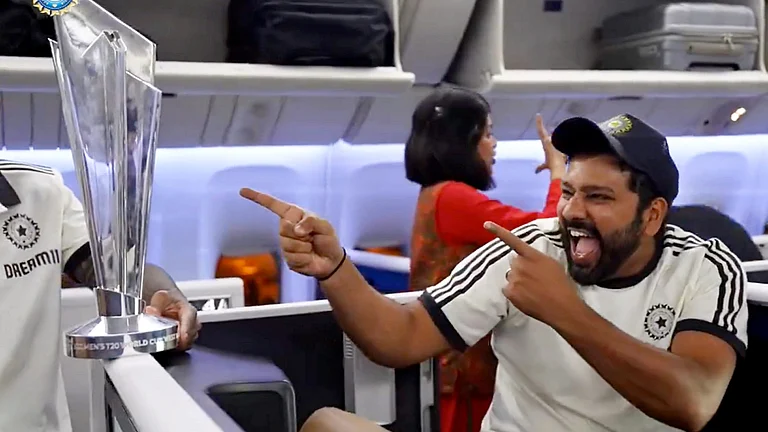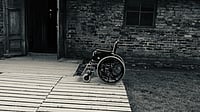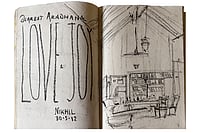“Beyond good and evil/the sky/is blue”
—Abbas Kiarostami
“And in the real cinema, every object and every light means something, as in a dream”
—Federico Fellini
I know the black cat was not there. I know you weren’t there either. This is a love letter to realness in the times of everything virtual. Like virtual production.
There are those big promises. Immortality, elsewheres and the fantasia of multi-levelled virtual heterotopias, which are multiple time and places connected and differentiated. Read body scanners, LED walls, virtual and augmented reality.
Nothing is real though. At least in terms of tangibility. The forest, the desert, the river, the world, too. Many worlds can be created out of this one. If time is distance, virtual production has collapsed time itself. It offers salvation and solutions. You can be anywhere and everywhere. It is called hyperreality, a state of human consciousness that can no longer differentiate between real and the simulation of the real. This is where fact and fiction are fused.

This is how films came into being. The viewers have been urged to lose their grip on reality.
The technology that powers all of this is called Unreal Engine, a real-time 3D creation tool “for photoreal visuals and immersive experiences”.
Then, there are the Volume Walls, which project live backgrounds and enable live-action production. These are massive walls. Everything can be altered by a few computer commands. You can be teleported anywhere. A black cat from anywhere can be placed on a bridge. A cloud can be fit. You can make rain. The possibilities are immense. Everything is possible.
This is the future. It is already here.
Al technology has made life easier and wars more sophisticated. But it has also made us more isolated from people and places.

They ask me to willingly suspend my disbelief. This means you believe the unbelievable for the duration of the story.
But what they offer is just simulation. Just that.
In that sense, religion, too, asks for the same. Look where it has led us. But that’s not the scope of this 1,000-word introduction to the issue. Although you might want to think about that too. The page is not a simulated world.
This willing suspension of disbelief is a literary device, and it is in 1817 that poet Samuel Taylor Coleridge introduced it in Biographia Literaria.
It means putting art before probability. It is about finding faith. We, as writers, do it. We call it poetic faith. It asks us to imagine, to escape. To find worlds through words. Our imagination is real. Not simulated.
With virtual production now, we are being asked to suspend more of this disbelief to not just enter fantasia but also, the world. Simulated, of course. Reductive, too. Controlled also.

How much of this world can we let go of? That’s more of a philosophical inquiry.
The sellers of virtual production say this will change how films are shot, organised and produced. They say time and monies will be saved.
It is a path of least resistance. You enter the world of possibilities, of pretend reality, of premises.
But why corrupt cinema like this? They will invoke democratisation, less carbon footprints, accessibility, etc.
The limits of imagination are at stake, too. To imagine, I must know the world. To go beyond it, I must have experienced it, seen it, touched it. I can’t always recreate it. But I can be haunted by it. Like I am by what looked like little graves and dunes in Stalker, a 1979 film by Russian filmmaker Andrei Tarkovsky. The film that tracks the journey of three men into a devastated future landscape where they are lured by the Zone. There is an abandonment replete in the landscape, which is the result of direct observation of the truth, which, in the context of the film, means the reality of time. It was shot in an abandoned power plant on the Jagale River in Estonia where the fantastical became more symbolic. The world is a lot of places, spaces, a lot of heterotopias and anomalies. Like the Zone in the film. We must be willing to cross numerous geographical and spiritual boundaries in search of locations. Like Tarkovsky did in his films.
He developed a theory of cinematography called “sculpting in time”, where cinema was an environment. Through this, he wanted to highlight the unique feature of cinema as an environment made up of time, lost time, and the relationship between time and time.
Cinema is an experience, the only medium where time and space can be rolled and unrolled forever, a portal, a place of knowing and a place of interactions and negotiations with emotions and imagination.
A film must affect people individually.
There must be a purity of purpose.
Tarkovsky said: “Cinema is the only art that operates within the concept of temporality. Not because of its developing in time; there are also other art forms that do so: ballet, music, theatre. I mean ‘time’, in the literal sense of the word. What is a take, from the moment we say ‘action’ till the moment we say ‘stop’? lt is the fixing of reality, the essence of time, a way of preserving time which allow to roll and unroll it forever. No other form of art can do that. Therefore, cinema is a mosaic made of time.”
With virtual production that uses computer-generated imagery (CGI) and special effects, filmmakers can set their stories in other galaxies, deep seas, or any fantasyland.
Virtual production with all its powers can’t do a Stalker.
A unicorn has a horse’s body. Think about it.
A film’s purpose is to reveal reality. French film critic and theorist Andre Bazin in his article The Evolution of the Language of Cinema makes a distinction between “those directors who put their faith in the image and those who put their faith in reality”.
As a viewer, I put my faith in reality. In the times that we live in, we must not manipulate reality too much. A montage is important but it can be overused. There is the still-unfolding crisis of information and trust. XR (an umbrella term covering virtual, augmented and mixed reality) could be very persuasive and can challenge the very foundations of trust and truth. All this technology can break the truth. We live in a real world after all.
A landscape is both a poetic and a political place that is haunted by fantasy. Let realness be. Like love. Let cinema be a little real. Let the whole world not be in a room at the same time. Let us be apart to be closer. Let us find places. Let’s not compress everything. Let’s be willing to suspend our disbelief for more. I believe in cinema.
In this issue, Outlook looks at how filmmaking is set to change with virtual production. Tanul Thakur has investigated the new technology and has been to the studio where he was in many places and yet, firmly in that compressed location. We have also tried to bring in the loss of cultural space with the phasing out of single screen cinemas documented brilliantly by Hemant Chaturvedi. These and more in this curated collection…
(This appeared in the print as 'Unwilling Suspension Of Disbelief')


























